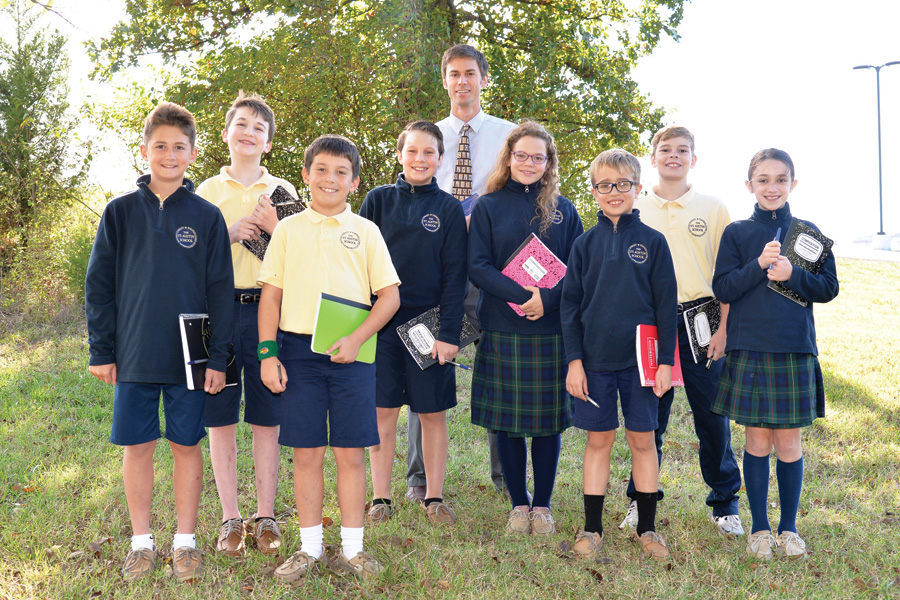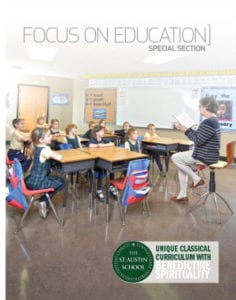Plato, Socrates, St. Thomas Aquinas, Shakespeare—these are the names of great thinkers and writers. Most students encounter them first in high school before delving deeper into their texts and ideas in college. The St. Austin School, however, believes there is no need to wait to introduce students to fundamental figures and schools of thought. The independent elementary and middle school in Town & Country offers a classical curriculum in the Catholic tradition that creates lifelong learners by teaching students to master critical, creative and logical thinking.
“Mastery is very important in classical education,” headmistress Geralyn Dolan says. “It’s learning something more deeply.” She explains that students at The St. Austin School develop a fuller understanding of what they learn and are less likely to forget it. “Our goal is to teach basic skills like reading and writing but also critical and creative ways of thinking,” says admissions director Danielle Morgenthaler. “If we can accomplish that, we can provide them with the foundation to succeed not only in the high school they choose, but also in life.”
St. Austin’s approach to math illustrates this educational philosophy well, according to Dolan. “We want to help students be problem-solvers; it’s not about memorizing equations,” she explains. “Once you know the basics, you can apply them to any problem. Our students truly understand mathematical concepts.” The success of the strategy, she says, can be seen in the students’ math test scores; they are in the top 9 percent in the nation.
Socratic questioning is another important teaching philosophy at the school. The method refers to systematic, disciplined questioning to explore complex ideas and analyze concepts. “Asking more questions encourages students to go deeper,” Dolan explains. “It draws them in and sparks their interest.” St. Austin embraces classical concepts elsewhere in the curriculum, too. Middle-schoolers study Shakespeare’s plays, and students start Latin in kindergarten and also learn Biblical Hebrew.
While the school is proud of its classical roots, it also seeks to innovate and prepare its students for the modern world. Along with classical languages, students take Spanish starting in prekindergarten. St. Austin also has an integrated curriculum and uses sources other than textbooks to engage students’ interest. Dolan gives the example of teaching early American history and the founding of Jamestown. “The teacher brings in an artist and composer from the period, and the class covers some piece of literature from the early 17th century,” she says. “It brings history to life, giving students a fuller picture and deeper understanding.”
Part of what makes St. Austin’s innovative approach such a success is its small class sizes. “We are able to get to know every student and understand their individual learning styles,” Morgenthaler says. “The bigger a school is, the more standardized it becomes out of necessity.” Even with an individualized focus, the school continues to grow. Previously, there was a combined third- and fourth-grade class, but a new facility this year allowed a separate classroom for each grade, and more additions are in the works. “The new space is wonderful,” Morgenthaler says. “It allows for measured and controlled growth as we continue to meet our full potential.”
The St. Austin School is a private, independent school in Town & Country that delivers a classical education in the Catholic tradition to pre-kindergarten through eighth grade students. For more information, call 314.580.2802 or visit saintaustinschool.org.
Cover design | Allie Bronsky
Cover photo | Bill Barrett









